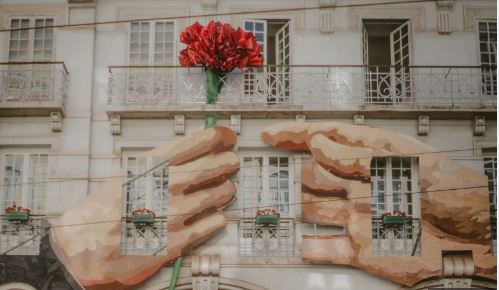‘No turning back’: Carnation Revolution divides Portugal again, 50 years on

As Portugal commemorates half a century of liberal democracy following the overthrow of the Estado Novo fascist dictatorship in 1974, concerns arise regarding the resurgence of far-right sentiments.
The olive-green military vehicles and uniforms remain unchanged, even on this April 25th – a Thursday, reminiscent of the historic day that marked the beginning of transformation along the Tagus River in the Portuguese capital, Europe’s westernmost edge.
However, the jubilant crowds lining the streets today, adorned with red carnations bought from flower vendors at Rossio Square, were absent fifty years ago. There were no applause or social media posts with catchy hashtags back then.
In the early hours of that brisk dawn, while Lisbon slept, a revolt was brewing. Portugal was then under the grip of a fascist dictatorship, the Estado Novo (“New State”), which had waged brutal wars in Portuguese Guinea, Angola, and Mozambique to maintain control over its African colonies. By day’s end, the 42-year-old dictatorship had been swiftly overthrown by a military coup.
“We were professional soldiers, accustomed to warfare, but this was entirely different,” recalls former navy captain Carlos Almada Contreiras.
Contreiras was among the 163 military captains who, in September 1973, clandestinely formed the “Movement of Armed Forces” (Movimento das Forças Armadas, MFA) during a secret gathering at a farmhouse. These men, veterans of Portugal’s colonial wars, understood that military victory was elusive, with morale declining and thousands of Portuguese soldiers dead since 1961.
On April 25, 1974, they set their sights on Lisbon’s political center, aiming to seize control of military installations, political chambers, broadcasting facilities, and the airport. The outcome of that pivotal day was uncertain.
